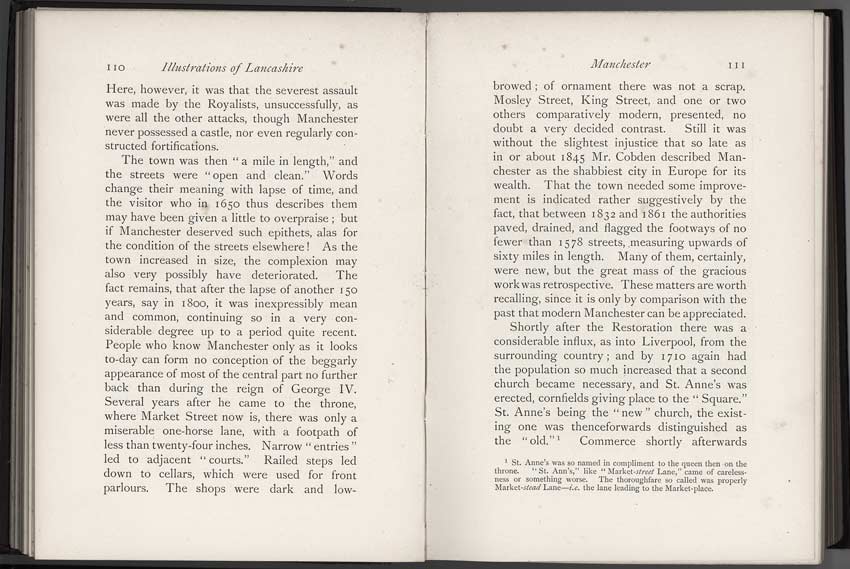
Scan and page transcript from:
LANCASHIRE - Brief Historical and Descriptive Notes
by Leo H. Grindon
Pub. 1892
pages 110-111 |
110 Illustrations of Lancashire Here, however, it was that the severest assault was made by the Royalists, unsuccessfully, as were all the other attacks, though Manchester never possessed a castle, nor even regularly constructed fortifications. |
Manchester 111 browed; of ornament there was not a scrap. Mosley Street, King Street,.and one or two others comparatively modern, presented, no doubt a very decided contrast. Still it was without the slightest injustice that so late as in or about 1845 Mr. Cobden described Manchester as the shabbiest city in Europe for its wealth. That the town needed some improvement is indicated rather suggestively by the fact, that between 1832 and 1861 the authorities paved, drained, and flagged the footways of no fewer than 1578 streets, measuring upwards of sixty miles in length. Many of them, certainly, were new, but the great mass of the gracious work was retrospective. These matters are worth recalling, since it is only by comparison with the past that modern Manchester can be appreciated. 1. St. Anne's was so named in compliment to the queen then on the throne. "St. Ann's," like "Market-street Lane," came of carelessness or something worse. The thoroughfare so called was properly Market-stead Lane - ie. the lane leading to the Market-place. |
